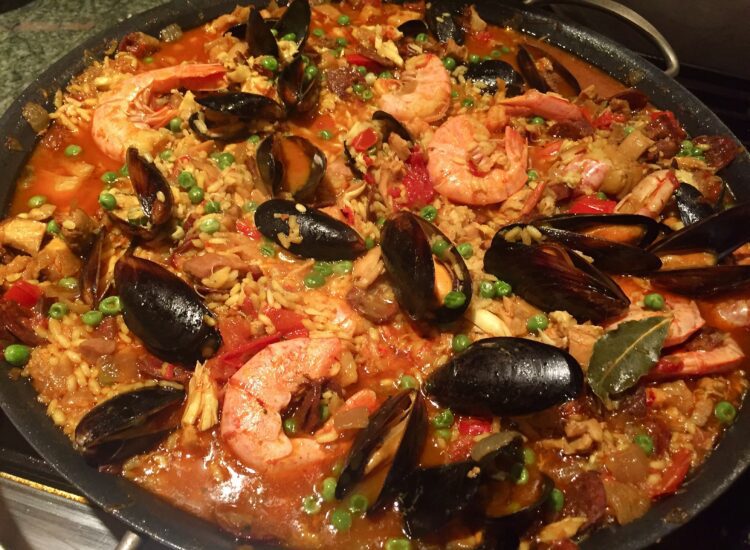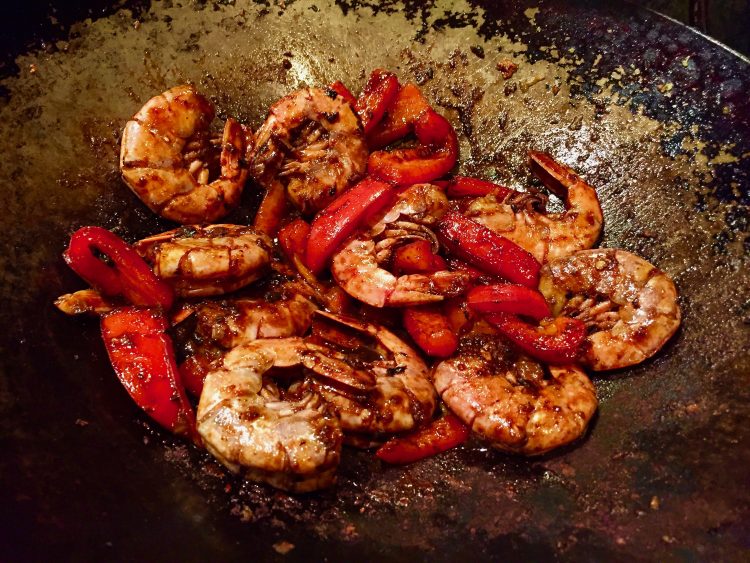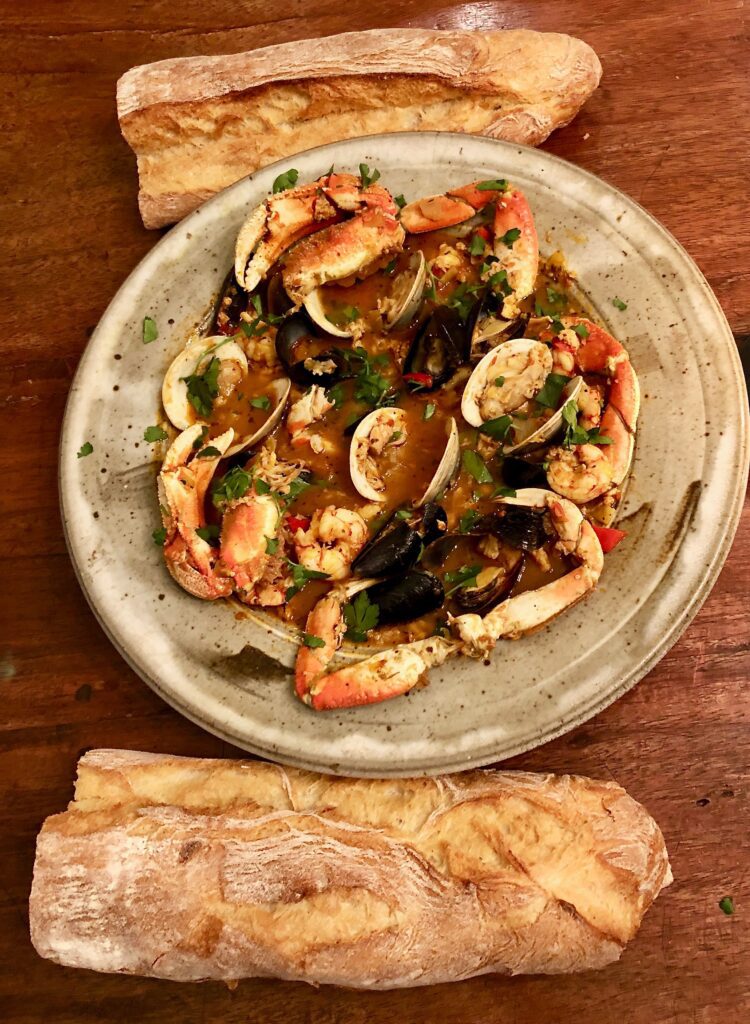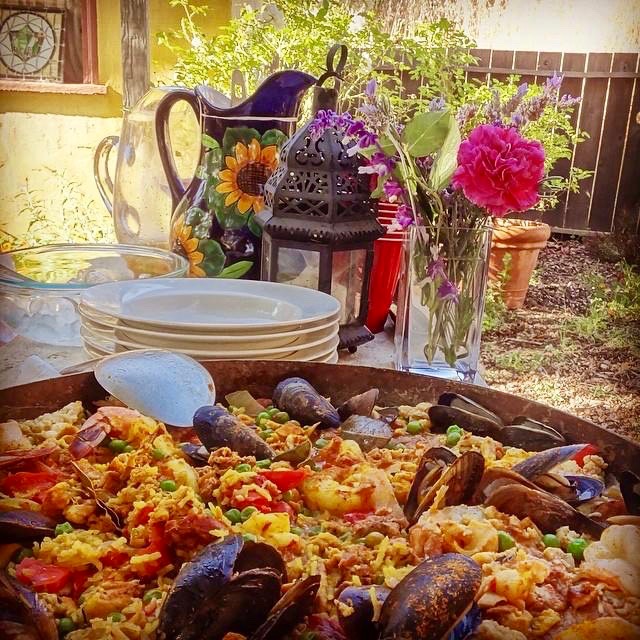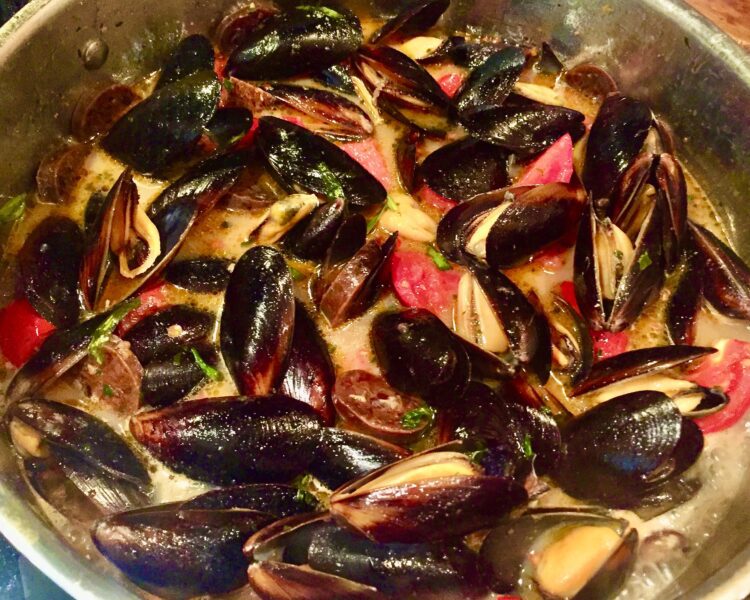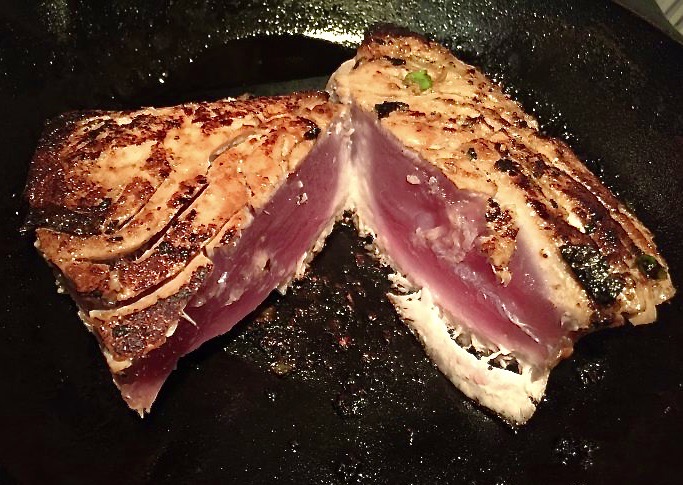Paella is the signature meal of Spain, a national pride, and yet almost no one fully agrees on how exactly it should be made. It is a controversial meal for many reasons… starting with the simple fact that it is a huge shallow pan loaded down with complex and expensive ingredients which completely vary from home to home, town to town, restaurant to restaurant, and from region to region in Spain. Paella in Madrid is very different from that in Seville. But at the same time, like Bouillabaisse from France, Paella is a classic meal so identified with the soul of the country that it naturally comes laden with emotion, memory, tradition, pride, and a sensory longing for the authenticity of the time and place of one’s upbringing.
Mussels
Szechuan Black Bean Sauce with Shrimp or Crab
Black bean sauce is very deep in our memory, a passionately held love affair from all the fabulous meals we enjoyed in the Chinatowns of Los Angeles, New York and San Francisco. They were seafood dishes filled with authenticity and gravitas, and packed with Umami. This little feast brings those extraordinary dishes into our own wild savory kitchen.
Cioppino
Beginning in the late 1800s, the commercial fishing fleet out of San Francisco’s North Beach and Fisherman’s Wharf was dominated by Italian fisherman, usually from the port city of Genoa. But some boats were manned by a mix of fisherman from many other nations. Working side by side with the Italians were Portuguese from Lisbon, Mexicans from Baja, Spaniards from Barcelona, Frenchmen from Marseille, Chinese fisherman who had been in the city for many years fishing for shrimp, and there were even some highly skilled long range seafarers from Basque. Cioppino became so popular among the families in the bay area that it began to be served as street food for laborers along the wharf and by 1906, after the devastating earthquake, it was served in several restaurants in town. It is a classic San Francisco feast and always eaten with the wildly popular local crusty sourdough bread.
Paella
Paella is the signature meal of Spain, a national pride, and yet almost no one fully agrees on what it is or how is should be made. It is a controversial meal for many reasons… starting with the simple fact that it is a huge shallow pan loaded down with complex and expensive ingredients which completely vary from home to home, town to town, restaurant to restaurant, and from region to region in Spain. Paella in Madrid is very different from that in Seville. But at the same time, like Bouillabaisse from France, Paella is a classic meal so identified with the soul of the country that it naturally comes laden with emotion, memory, tradition, pride, and a sensory longing for the authenticity of the time and place of one’s upbringing.
Steamed Mussels with Spanish Chorizo
Along the coasts of Spain and Morocco, when home cooks put a big bowl of seafood on the table for a family feast, this is one of their classics. This sauce is based on our own preserved Meyer lemons along with the natural juices of the seafood, the smoky chorizo, virgin olive oil, garlic, fresh herbs like Italian parsley and cilantro, garden fresh tomatoes and the magic of saffron. Serve with crusty bread to soak up all this umami goodness and with harissa on the side. Sometimes we steam the mussels we gather on the coastal tidal pools north of Santa Cruz in two copper Cataplana pots, which are made in Portugal. They are wonderful devices… hand hammered copper pots by Portuguese artisans. They have a tin lining inside and are held together like a clam shell with metal hinges, and they sit directly on the flame. The history of the Cataplana is obscure, which is excellent news for me because, as a dramatist, I can tell a good story about the legendary Cataplana that feels true to the time and place it was first recorded… which is the Algarve region of Portugal… and best of all, no one knows if I made it all up or not.
Seared Ahi
The three species of tuna that Americans enjoy eating the most are Albacore, Yellowfin (the Hawaiian word is Ahi) and Bluefin (the Japanese word is Maguro). Albacore is the lightest in flavor and texture, with large meaty flakes. The ubiquitous canned version is called “white tuna” but doesn’t come close to the flavor of freshly caught, which is exquisite. The word Ahi has become popular among restaurants because of this feast, Seared Ahi. Seared but left pink in the middle of the filet, it is the best of both worlds, crispy and explosively tasty and umami on the outside, and lush and sashimi on the inside. Bluefin is wildly popular around the world as sushi, called Maguro on the menu, and is the richest, most dense, and most expensive.
